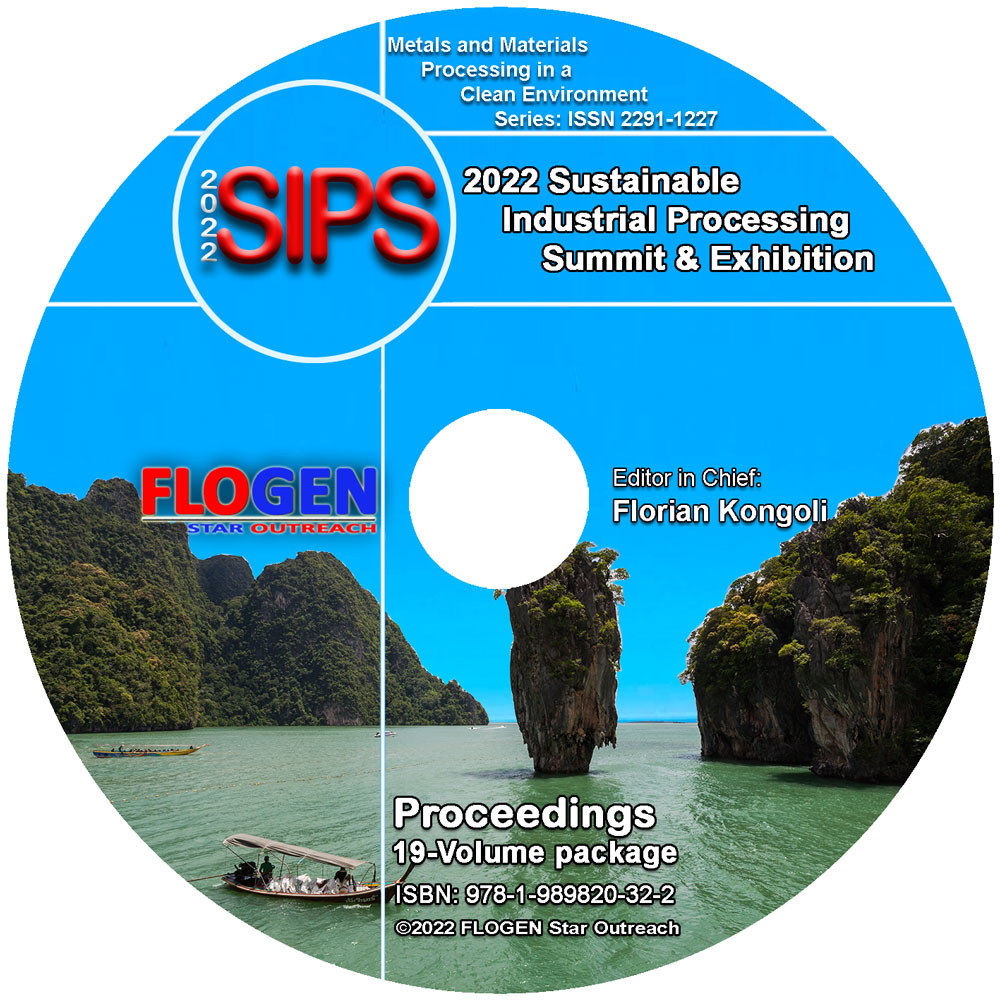2022-Sustainable Industrial Processing Summit
SIPS2022 Volume 3
Horstemeyer Intl.Symp.
Multiscale Materials Mechanics & Applications
| Editors: | F. Kongoli,E. Aifantis, A, Konstantinidis, D, Bammann, J. Boumgardner, K, Johnson, N, Morgan, R. Prabhu, A. Rajendran |
| Publisher: | Flogen Star OUTREACH |
| Publication date: | 22 December 2022 |
| Pages: | 382 pages |
| ISBN: | 978-1-989820-38-4(CD) |
| ISSN: | 2291-1227 (Metals and Materials Processing in a Clean Environment Series) |

CD shopping page
A comparison of the elastic-plastic contact model with the experimental results in friction and wear
Lev Rapoport1; Alexey Moshkovich2;1HOLON INSTITUTE OF TECHNOLOGY, Holon, Israel; 2, Holon, Israel;
Type of Paper: Regular
Id Paper: 281
Topic: 1
Abstract:
Tribology—the study of the interaction of sliding surfaces—has numerous applications, particularly in the design of biomedical devices. However, an important engineering challenge in contact mechanics and tribology is the evaluation and prediction of the transition from one contact mode to another. The principal difference in the contact interaction during friction is the dynamic loading with a variation in the roughness parameters, stress, strain, and wear particle formation. The complexity in the prediction of friction results from the gradient variation of the mechanical, physical, and chemical properties at the thin surface layers during contact interaction.
The objective of this work is to compare the elastic-plastic analytical models with the actual results of friction and wear researches. Since the friction phenomena are dominated by plastic deformation, the elastic models of contact interaction were not considered in this work. The parameters of the elastic-plastic models are compared with the recently published experimental results on the friction, wear, and structure of several face-centered cubic (fcc) metals in lubricated conditions. The main focus is on the boundary lubrication—friction and wear in more severe lubricant contact conditions. The following aspects of the elastic-plastic models will be considered: the contact area versus external load and yield stress, the deformation hardening, a statistical description of the contact geometry, the sinusoidal surface under contact loading, the plasticity index, and the multiscale modeling of materials. The parameters calculated in the analytical simulation are compared with the results of the experimental friction and wear tests. The non-dimensional parameters such as the normal load, yield stress, and the real area of contact calculated in the simulation were significantly greater than those in the friction tests. A balance between the external and internal parameters during contact interaction and friction is considered as: the balance between the contact pressure (loading external parameter) and the yield stress (internal structural parameter) in simulation, and a balance between the applied stress (loading) and the internal stress (internal deformed structure) in friction. The analysis of the elastic-plastic and wear models of contact interaction and damage development allows us to conclude that our knowledge and understanding of such complex phenomena as the mechano-chemical and defect interaction of the moving contact pairs could not be predicted in a short time.